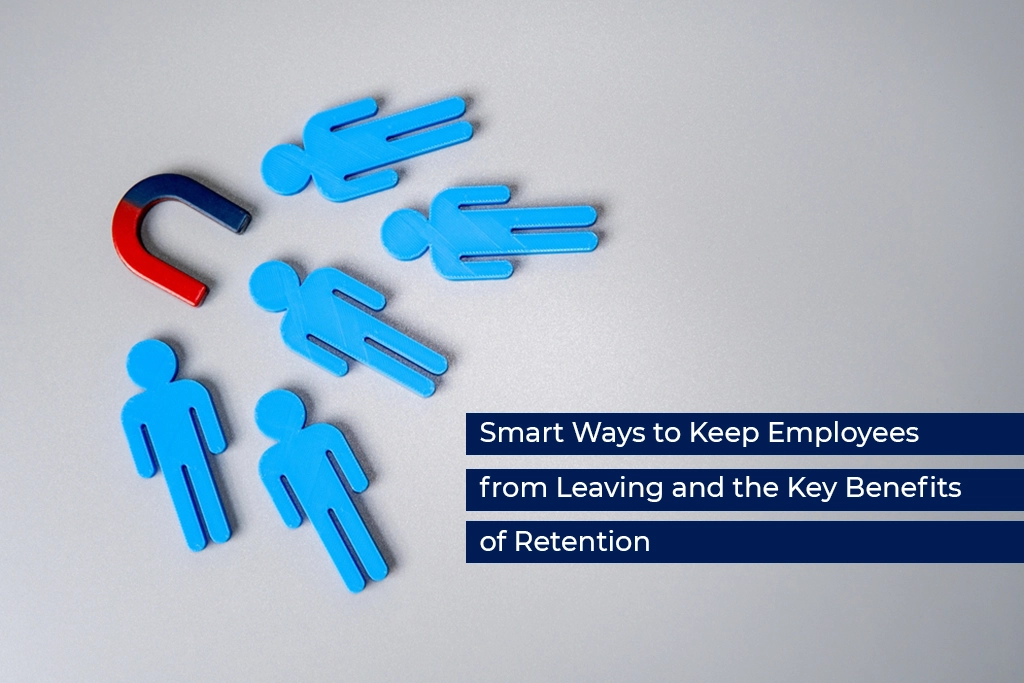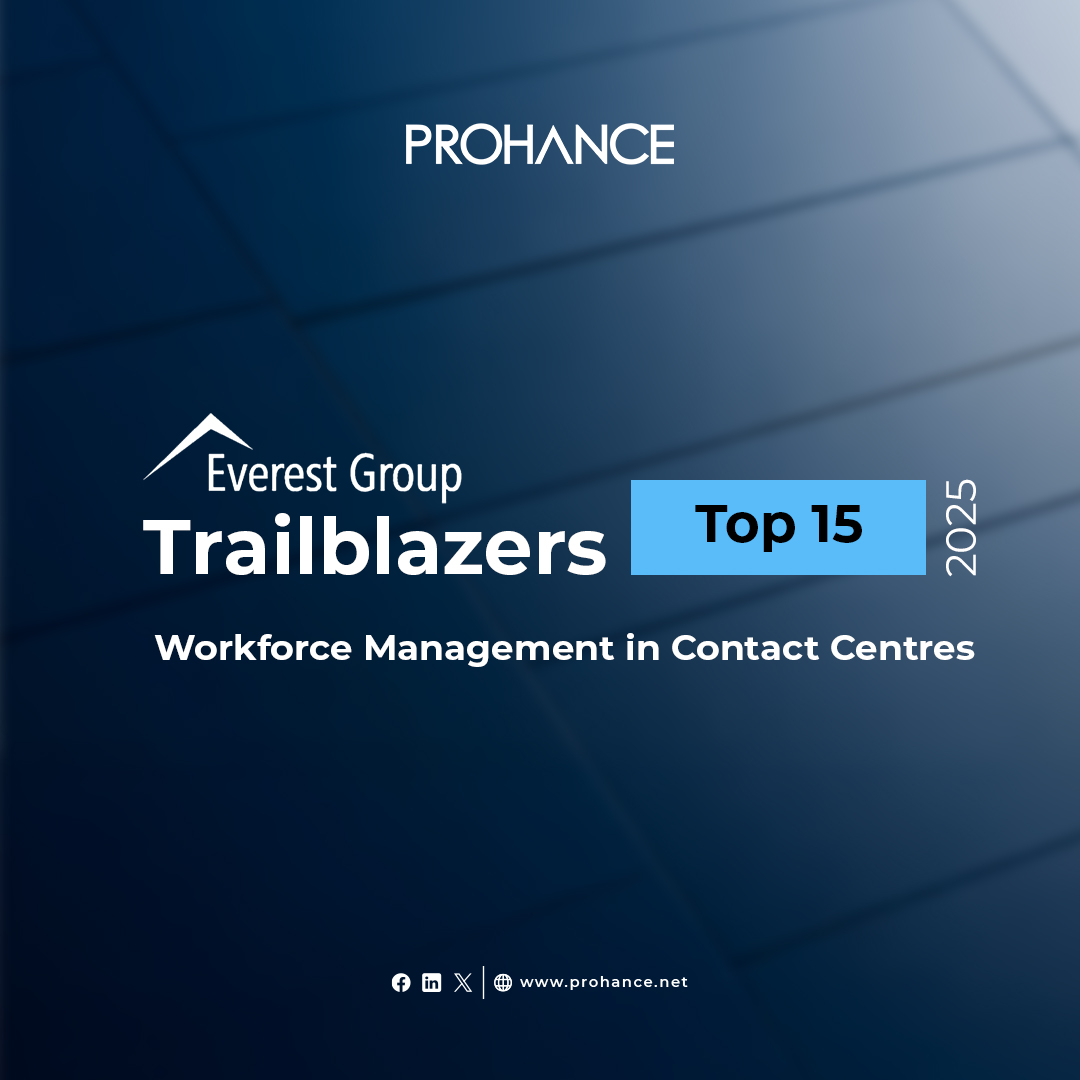Smart Ways to Keep Employees from Leaving and the Key Benefits of Retention
Table of Contents
- The Revolving Door Problem: Why Can’t Companies Retain Employees?
- The Hidden Price Tag of Goodbye
- Smart Ways to Keep Employees from Leaving the Company
- The Long-Term Payoff of High Retention
- How Does ProHance Support Employee Retention?
- The Bottom Line on Keeping Top Talent
- Frequently Asked Questions
Employee turnover is a growing trend that keeps HR directors and business leaders up at night. Many industries are struggling with mass resignations, quiet quitting and job abandonment!
These widespread challenges raise important questions about why so many businesses struggle with retention and what practical solutions exist. After all, when employees walk out the door, they take with them institutional knowledge, client relationships, and a significant piece of company culture.
As one veteran HR professional put it, “Each resignation represents not just a person leaving, but the departure of possibilities.” So how to retain employees? Let’s find out!
The Revolving Door Problem: Why Can’t Companies Retain Employees?
So, what’s driving people to pack up their desks and leave? Here are a few reasons:
- Toxic Work Environments are driving people away in record numbers. A shocking 32.4% of employees who left their jobs in 2024 cited a negative workplace culture as their primary reason for departure.
- Poor Leadership remains a persistent issue, with approximately 30.3% of employees reporting that inadequate company leadership influenced their decision to quit. As the saying goes, “People don’t leave bad jobs; they leave bad bosses.”
- Career Stagnation has become increasingly intolerable to modern workers. In 2024, 18.3% of employees jumped ship due to limited growth prospects.
- Work-Life Imbalance pushed about 20.8% of employees to resign last year. With remote work normalizing flexible arrangements, companies demanding rigid schedules are finding themselves at a competitive disadvantage.
- Compensation Concerns still matter tremendously – 20.5% of employees cited unsatisfactory pay as their exit reason in 2024. Meanwhile, personal circumstances, including health and family issues, accounted for 18.7% of departures.
The Hidden Price Tag of Goodbye
When employees leave, the costs run deeper than many executives realize. Beyond the obvious expenses of recruiting, onboarding, and training replacements (which can run between 50-200% of the position’s annual salary), there are numerous hidden costs:
- Productivity plummets during transition periods
- Team morale takes a hit when colleagues depart.
- Client relationships may suffer or completely dissolve.
- Remaining employees often shoulder heavier workloads, leading to burnout and potentially more departures
This ripple effect can seriously impact your bottom line.
Smart Ways to Keep Employees from Leaving the Company
The good news? There are concrete strategies that work. Here’s what forward-thinking companies are doing to retain their valuable talent:
1. Building a Culture of Transparency and Engagement
Honest and open communication work as catalysts to build trust. Companies that foster transparency tend to have more engaged employees who stick around longer.
2. Creating Meaningful Growth Pathways
When employees see a future for themselves at your company, they’re less likely to look elsewhere. This means going beyond vague promises of advancement. For example, you can use performance metrics captured through ProHance to identify areas where employees excel and where they might benefit from additional training.
3. Embracing Flexibility Without Sacrificing Results
The pandemic permanently shifted expectations around work arrangements. Companies that insist on returning to rigid pre-pandemic schedules are facing resistance.
4. Using Data to Anticipate and Address Issues
In our data-rich world, companies can now spot potential flight risks before resignation letters are written. Behavioral analytics tools can identify patterns that often precede departures.
5. Compensating Competitively (But Not Just With Cash)
While money matters, it’s rarely the only factor. Companies with strong retention often offer creative benefits packages that address various needs.
6. Empowering Managers as Retention Champions
Front-line managers have the most direct impact on employee experience. Companies that invest in management training see significant improvements in retention. Using ProHance’s team performance dashboards can help you have more informed, constructive conversations with team members.
The Long-Term Payoff of High Retention
Companies that successfully tackle retention challenges enjoy substantial benefits:
Productivity Soars – Employees who stick around develop systems knowledge and efficiencies that new hires simply can’t match.
Costs Drop Dramatically – Beyond the obvious hiring and training savings, stable teams require less oversight and make fewer costly mistakes.
Culture Strengthens – Long-term employees become culture carriers who help maintain your company’s values and practices through periods of change.
Customer Experience Improves – There’s a direct correlation between employee tenure and customer satisfaction scores. Clients appreciate familiar faces who understand their needs without repeated explanations.
Recruitment Gets Easier – Happy employees become your best recruiters.
How Does ProHance Support Employee Retention?
| Challenge | Retention Strategy | ProHance Feature |
| Lack of transparency and engagement | Real-time visibility & team transparency | Activity Dashboards, Real-time Insights |
| Limited growth and learning opportunities | Personalized development plans | Performance Metrics & Trends |
| Poor work-life balance | Flexible work culture | Workload Balancing, Time Distribution Reports |
| Managerial disconnect | Better leadership decisions | Team Performance Dashboards |
| Disengagement and burnout | Early warning systems | Behavioral Analytics, Alerts on Deviations |
| No data-driven retention planning | Predictive analytics for HR | Workforce Analytics, Custom Reporting |
The Bottom Line on Keeping Top Talent
The challenge of how to retain great employees isn’t going away anytime soon. Organizations that thrive are those making retention a strategic priority rather than an afterthought.
Tools like ProHance provide the visibility, insights, and data needed to build effective retention strategies. Yet technology alone isn’t the silver bullet – when paired with genuine care for employee wellbeing and growth, the results become transformative. Understanding why employees leave and implementing targeted strategies creates workplaces where people naturally want to stay, grow, and contribute their best work.
After all, in a world where talent determines market advantage, knowing how to keep employees from leaving becomes perhaps the most crucial business skill organizations can develop. Companies that master this skill don’t just reduce costs – they build sustainable competitive advantages that last decades.
Frequently Asked Questions
How quickly should organizations expect to see results from new retention initiatives?
Most companies observe initial improvements within 3-6 months, with noticeable drops in resignation rates. However, sustainable change typically takes 12-18 months as new practices become embedded in company culture and trust builds throughout the organization.
What’s the single most effective retention strategy for small businesses with limited resources?
Creating genuine growth opportunities yields the highest return on minimal investment. Even without large training budgets, small companies can offer employees new responsibilities, mentorship, and exposure to different aspects of the business. Smaller organizations often have the advantage of offering broader experience than siloed corporate roles.
How do remote work policies impact retention rates?
Organizations offering flexible remote options typically see 20-35% better retention rates, particularly among employees with caregiving responsibilities or lengthy commutes. Data shows the sweet spot isn’t necessarily fully remote work but rather a flexibility that respects employees as people with lives outside work.
Is exit interview data actually useful for improving retention?
Yes, but only when collected systematically and acted upon. The key lies in identifying patterns rather than dismissing feedback as individual grievances. Smart organizations combine exit data with stay interviews – conversations with current high performers about what keeps them engaged – to create comprehensive retention strategies.





